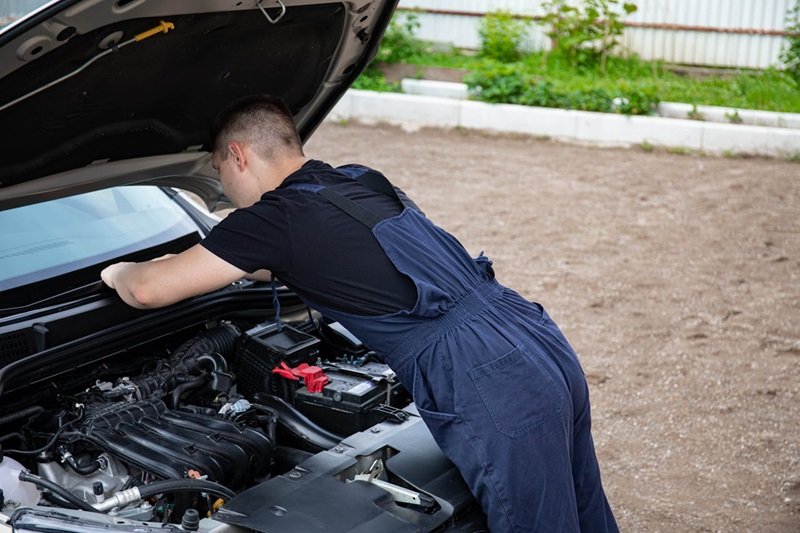Have you ever wondered if you’re overspending on car parts? Or found yourself feeling a bit stuck between brand-new options and second-hand finds? You’re not alone. Many drivers across Australia face the same challenge when it’s time to repair or upgrade their vehicles. Knowing where to look and what factors to consider can make all the difference.
By the time you’ve finished reading, you’ll be equipped with the knowledge to make smarter decisions and save money. You’ll understand how to navigate shipping costs, where to find discounts, and why regular maintenance is a game-changer. Ready to learn more? Let’s jump in and explore cost-effective car part solutions that will help keep your ride running smoothly without breaking the bank.
Understanding Cheap Car Part Costs
Car part pricing can sometimes feel like a puzzle. You see the same type of component with vastly different price tags, and it’s hard to decide which one actually offers the best value. Beyond the sticker price, a lot of factors play a role, including brand reputation, scarcity of the item, and how it’s distributed throughout Australia.
Brand vs. Aftermarket: Which Is Better Value?
When weighing up brand-name parts against aftermarket alternatives, cost is often the first thing that catches your eye. Brand-name items can be pricier, but they typically come with a history of reliability and a solid warranty. Meanwhile, aftermarket parts are made by third-party manufacturers and can offer substantial savings.
So, which is better value? If you need unparalleled fit and manufacturer guarantees, you might lean towards brand parts. On the other hand, if you’re after something that gets the job done at a lower cost, consider going aftermarket. What’s more, some aftermarket components perform just as well sometimes even better than their brand-name counterparts. It all boils down to balancing performance with your budget.
Identifying Rare vs. Common Parts
Not all car parts are made equal. A basic item like a standard brake pad is typically easy to find and competes in a busy market where prices remain fairly consistent. By contrast, a rare engine module for a less common vehicle may come with a much heftier price tag.
To spend your money wisely, start by understanding how in-demand your part is. Common spares such as filters or light bulbs are often available at competitive rates, while unique parts might be more expensive. Having a clear idea of each part’s rarity helps you set expectations and decide quickly if you’re looking at a fair deal.
How Shipping and Sourcing Affect Prices in Australia
If you’ve ever purchased parts online, you’ll know that shipping fees can turn a great bargain into a costly endeavour. Australia’s unique geography sometimes leads to higher transport charges, especially if you’re ordering from overseas. This factor can make the price balloon before the part even arrives at your door.
One way around this is to look for locally listed items or reliable couriers offering reasonable delivery costs. Alternatively, consider picking items up in person if the supplier is within driving range. Factoring in both the part price and shipping fees is essential so you can compare apples to apples.
Exploring Low-Cost Avenues for Cheap Car Parts
Now that you know what impacts the price, it’s time to investigate some of the best places for finding bargains. From salvage yards to online retailers, Australia is rich with possibilities. The key is to approach each avenue with a clear understanding of what you need and how to spot a good deal.
Salvage Yards and Local Wreckers
Salvage yards and local wreckers are often goldmines for low-cost components. You’ll find an array of parts from older models, as well as from newer cars that might have been written off after an accident. The trick is to inspect items carefully before you buy.
If you’re handy with tools, you can sometimes remove the pieces yourself, which might mean a lower purchase cost. Along with the thrill of discovery, you also help the environment by reusing parts that would otherwise go to waste. Bear in mind, though, that you may not always get warranties or return policies, so a thorough inspection is vital.
Online Retailers and Marketplaces
With Australia’s digital sphere growing, more and more repairs start with a quick online search. Websites like eBay or specialist marketplaces provide an abundance of new and second-hand solutions. You can often filter by price, condition, and location, making it easier to sort through your options.
Just be sure to read seller ratings and buyer reviews. What’s more, look for secure payment methods that protect your investment if an item doesn’t live up to its description. By comparison, official retailer sites might offer higher prices but usually have more robust return or warranty policies.
Seasonal Discounts and Special Promotions
Timing can be everything when it comes to affordable parts. Keep an eye out for Black Friday, end-of-financial-year sales, or local holiday promotions. Retailers often slash prices to move inventory or encourage new buyers.
To jump on these deals, you can sign up for newsletters or follow your favourite auto parts stores on social media. This way, you’ll get a notification whenever fresh promotions pop up, letting you act fast and secure the parts you need at a discount.
Evaluating Quality vs. Price
It’s tempting to go for rock-bottom prices, but not all cheap parts are created equal. You want to avoid low-quality items that might fail prematurely or even pose a safety risk on the road. Striking the right balance between quality and cost is crucial.
How to Tell Genuine Parts from Counterfeits
Counterfeit or substandard parts can sneak onto the market, sometimes at unbelievably low prices. At first glance, these items might look legitimate, especially if they come with packaging that mirrors the original brand’s design.
One sign of authenticity is clear, accurate labelling. Genuine parts typically have a part number or hologram that you can trace back to the distributor. Another clue is the weight fake parts are sometimes lighter because they’re made with cheaper materials. Whenever possible, buy from reputable shops or confirm the item’s origin before you commit.
Understanding Warranty and Return Policies
A solid warranty is more than just a piece of paper. It’s an extra layer of reassurance that the part will work as advertised. Vendors who stand by their products will often provide straightforward return policies, allowing you to swap or return faulty items within a specified window.
While some used or refurbished parts might not come with a warranty, others do. If you’re purchasing from a salvage yard or second-hand marketplace, ask about return options just in case. Even if something seems like an amazing bargain, don’t forget to double-check those policy details to avoid any nasty surprises later.
Practical Tips for Long-Term Savings
Tracking down one or two affordable car parts is great. But keeping your overall maintenance costs in check requires a strategic approach. Here are a few suggestions to help you save money and stress in the long run.
Building a Relationship with Local Mechanics
A friendly chat with a neighbourhood mechanic can open doors to discounts or insider knowledge about reputable suppliers. Mechanics often order parts in bulk and might pass on their savings to loyal customers. If they know you’re committed to maintaining your vehicle, they’re more likely to give helpful advice.
Finding a reliable mechanic isn’t just about cost. It’s also about trust. You’ll feel more confident that the parts you’re getting are the correct fit, and any concerns can be addressed on the spot. This working relationship can also prevent small issues from morphing into expensive problems later.
Protecting Your Investment with Regular Maintenance
Prevention is better than cure especially in the automotive world. Regular oil changes, brake checks, and fluid top-ups can save you from a big repair bill down the line. Spending a little on maintenance helps ensure that your parts aren’t wearing out prematurely.
It’s also good to keep service records. If you decide to sell or trade in your car at some point, buyers often appreciate a well-documented maintenance history. This can boost your car’s resale value, offsetting some of the initial costs spent on upkeep.
Keeping an Eye on Industry Trends
Staying informed about auto industry news can help you snap up bargains before they become mainstream. For instance, if a newer version of a part is rolling out, retailers might offer the older stock at a discounted rate. Similarly, certain car models might have an excess of spare parts that need to be sold off quickly.
Social media pages, online newsletters, and car enthusiast forums are all good sources of real-time updates. With a bit of attention, you’ll be well placed to spot the next big discount or clearance offer.
Making Smart Choices for Cost-Effective Car Part Solutions
Finding high-quality and cost-effective cheap car parts doesn’t have to be a headache. It starts with knowing the true value of what you need, then exploring both online and offline marketplaces. Carefully balancing price with quality can save you financial stress, and it’s worth remembering that a warranty can often be your best friend.



